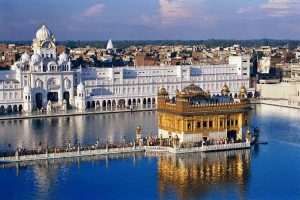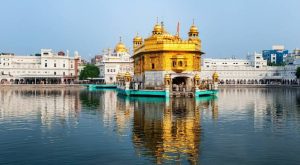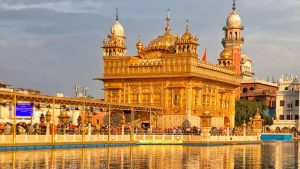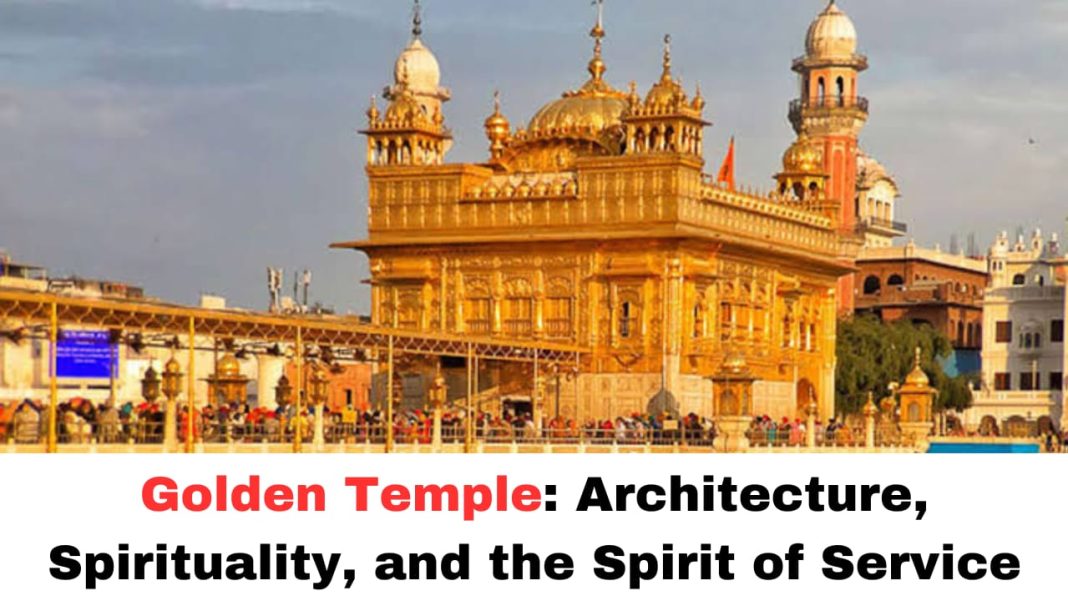Digital News Guru Punjab Desk:
The Golden Temple: A Symbol of Spirituality, Peace, and Unity
The Golden Temple, or Harmandir Sahib, is one of the most revered religious sites in the world and holds immense significance for millions of Sikhs around the globe. Located in Amritsar, Punjab, India, the Golden Temple is not only a place of worship but also a beacon of spiritual enlightenment, peace, and unity. With its breathtaking architecture, historical significance, and message of inclusivity, the Golden Temple has earned its place as a symbol of faith and hope for people from all walks of life.
Origins and Historical Background
The Golden Temple was established in the 16th century, with its foundation being laid by the fourth Sikh Guru, Guru Ram Das, in 1581. However, the temple itself was built by his successor, Guru Arjan Dev, in the early 1600s. Guru Arjan Dev compiled the Adi Granth, the holy scripture of Sikhism, which was placed in the temple as the central spiritual text. The temple’s design and construction are rooted in the idea of openness and inclusivity. The temple was constructed in the middle of a large pool, symbolizing purity and sanctity. The architecture blends Mughal, Hindu, and Sikh styles, reflecting the unity of various traditions.

The Golden Temple’s name comes from the golden plating that adorns the temple’s structure, adding to its resplendent beauty. The temple complex, known as Harmandir Sahib, is surrounded by the Amrit Sarovar (Pool of Nectar), which is believed to have healing properties. Pilgrims from all over the world come to bathe in the waters, seeking solace, peace, and spiritual rejuvenation.
The Golden Temple’s Spiritual Significance
The Golden Temple is the most sacred shrine of Sikhism and holds deep spiritual meaning. It is a place where people can connect with the divine, offering prayers, meditating, and seeking solace in the peaceful surroundings. The temple’s philosophy is rooted in the teachings of the Sikh Gurus, who emphasized equality, compassion, and service to humanity.
One of the key principles promoted by the Golden Temple is Seva, which refers to selfless service to others. Volunteers, known as Sevadars, work tirelessly in the temple, serving free meals (Langar) to thousands of people every day, regardless of their caste, religion, or background. This concept of universal equality is at the heart of Sikhism and is reflected in the Golden Temple’s welcoming atmosphere. It is not only a spiritual sanctuary but also a symbol of social justice, as it serves as a reminder that all humans are equal in the eyes of God.
Architecture and Design
The architectural design of the Golden Temple is one of the most remarkable aspects of the complex. The central structure, which houses the Guru Granth Sahib (the holy scripture of Sikhism), is a stunning combination of Islamic and Hindu architectural elements. The four entrances to the temple symbolize the openness of Sikhism, as it welcomes people from all directions and walks of life. The temple itself is constructed with marble and gold, which adds to its ethereal beauty. The golden dome, which gleams under the sunlight, gives the temple its iconic appearance.
The temple is surrounded by the Amrit Sarovar, or “Pool of Nectar,” which is a large, square-shaped water body. Pilgrims often take a ritualistic dip in the holy water as a sign of purification. The sarovar is also symbolic of the eternal flow of life and spiritual liberation. Surrounding the central structure is a series of paths, walkways, and gardens, creating an atmosphere of peace and serenity.

One of the most striking features of the Golden Temple is the intricate Nishan Sahib (flagpole), which flies the Sikh flag, the Nishan Sahib, symbolizing the presence of the Guru and the teachings of Sikhism.
The Langar and Community Service
One of the most profound aspects of the Golden Temple is the Langar, the free community kitchen that serves meals to anyone who enters the complex. The Langar is a unique feature of Sikhism, introduced by Guru Nanak, the first Sikh Guru. The concept of Langar is rooted in the values of humility, selflessness, and equality. No one is turned away, and no one is charged for the meal, regardless of their background or socio-economic status.
Every day, volunteers cook and serve meals to over 50,000 people, sometimes even more. The meals served are simple but nourishing, typically consisting of daal (lentils), roti (bread), and vegetables. The act of serving food is seen as an offering to God, and participants of the Langar are encouraged to help with cooking, serving, and cleaning, fostering a spirit of community and service.
The Langar is not only a physical nourishment but also a spiritual one. It represents the Sikh teaching that all people are equal, and no one should be discriminated against based on caste, race, or religion. By sitting together and eating the same food, people from different walks of life break down social barriers and foster a sense of unity and brotherhood.
The 1984 Operation Blue Star and its Legacy
The Golden Temple has been the center of several historical events, most notably the tragic events of Operation Blue Star in 1984. In June 1984, the Indian government launched Operation Blue Star to remove Sikh militants who had taken refuge in the temple complex. The operation resulted in the loss of many lives, including that of the Sikh leader, Jarnail Singh Bhindranwale.
The attack on the Golden Temple was deeply controversial and left a lasting impact on the Sikh community, both in India and around the world. The event led to a period of heightened tension and mistrust between the Sikh community and the Indian government. In the years following the operation, efforts have been made to reconcile and heal the wounds left by the violence, and the Golden Temple remains a place of pilgrimage, solace, and reflection.
The Global Influence of the Golden Temple
The Golden Temple is not just a symbol of Sikhism, but it has become a symbol of peace, tolerance, and inclusivity that resonates with people worldwide. Its teachings of equality, humility, and service have universal appeal, transcending religious and cultural boundaries. Every year, millions of pilgrims visit the Golden Temple, not only from India but from across the globe, including Sikh diaspora communities.

The temple continues to be a symbol of spiritual and moral guidance for millions, serving as a reminder of the importance of love, compassion, and harmony in a world that often seems divided by conflict and discord.
Conclusion
The Golden Temple stands as a beacon of spirituality, peace, and unity, attracting people of all backgrounds who seek solace and a deeper connection with the divine. Its rich history, awe-inspiring architecture, and commitment to serving humanity make it a unique and sacred place. As a symbol of Sikhism’s core principles, the Golden Temple continues to inspire people across the world to live lives of selflessness, equality, and service. In a world marked by division, the Golden Temple is a shining reminder that peace, unity, and love are the true paths to spiritual fulfillment.
You May Also Read: Allu Arjun’s ‘Pushpa 2’ Dominates the Box Office, Crosses Rs 900 Crore in 12 Days








